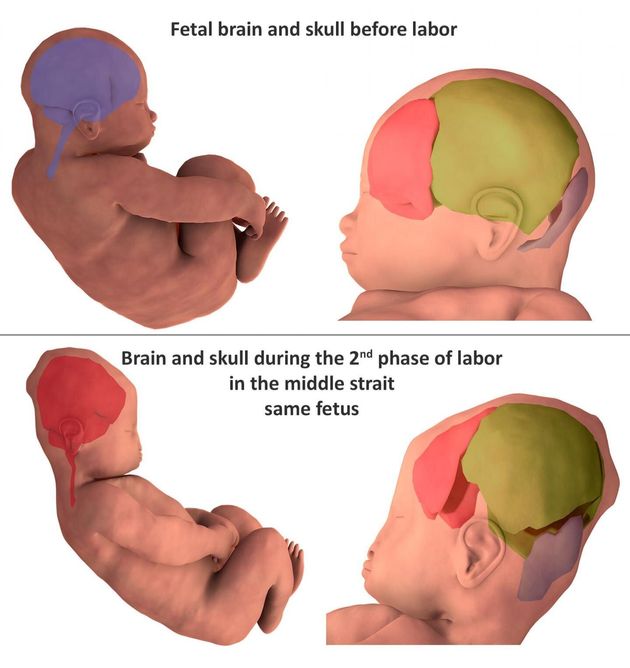Childbirth is a wonder, but the idea of a human head leaving your body may still have many women crossing their legs: a skull just doesn’t seem like it should fit through such a narrow space?
Now scientists have revealed new images showing how the head of a baby actually changes shape in order to make it easier (even if it doesn’t feel easy) during labour for the baby to move down the birth canal for delivery.
Using MRI scans, scientists have developed these 3D images of infants cranial bones (their brains and skulls) during the process known as “foetal head moulding” that happens when the baby leaves the uterus.

The team looked at seven infant skulls and based the images on the changes that occurred in each. The images look pretty extreme – with the babies moving from rounded skulls to far more pointed.
After birth, five of the newborns’ skull and brain shapes returned to their pre-birth state, but the changes persisted in two of the infants.
Two of the three infants with the greatest degree of foetal head moulding were delivered by emergency C-section, but the third was delivered vaginally.
Lead author Olivier Ami said: “During vaginal delivery, the foetal brain shape undergoes deformation to varying degrees depending on the degree of overlap of the skull bones.
“Foetal skull moulding is no [longer] visible in most newborns after birth. Some skulls accept the deformation (compliance) and allow an easy delivery, while others do not deform easily (non-compliance).”
Overall, the findings suggest that infants experience greater skull stresses during birth than previously thought, potentially underlying the asymptomatic brain and retinal bleeding seen in many newborns after vaginal delivery.
The authors do note that a larger study will be needed to confirm their findings in this area.


